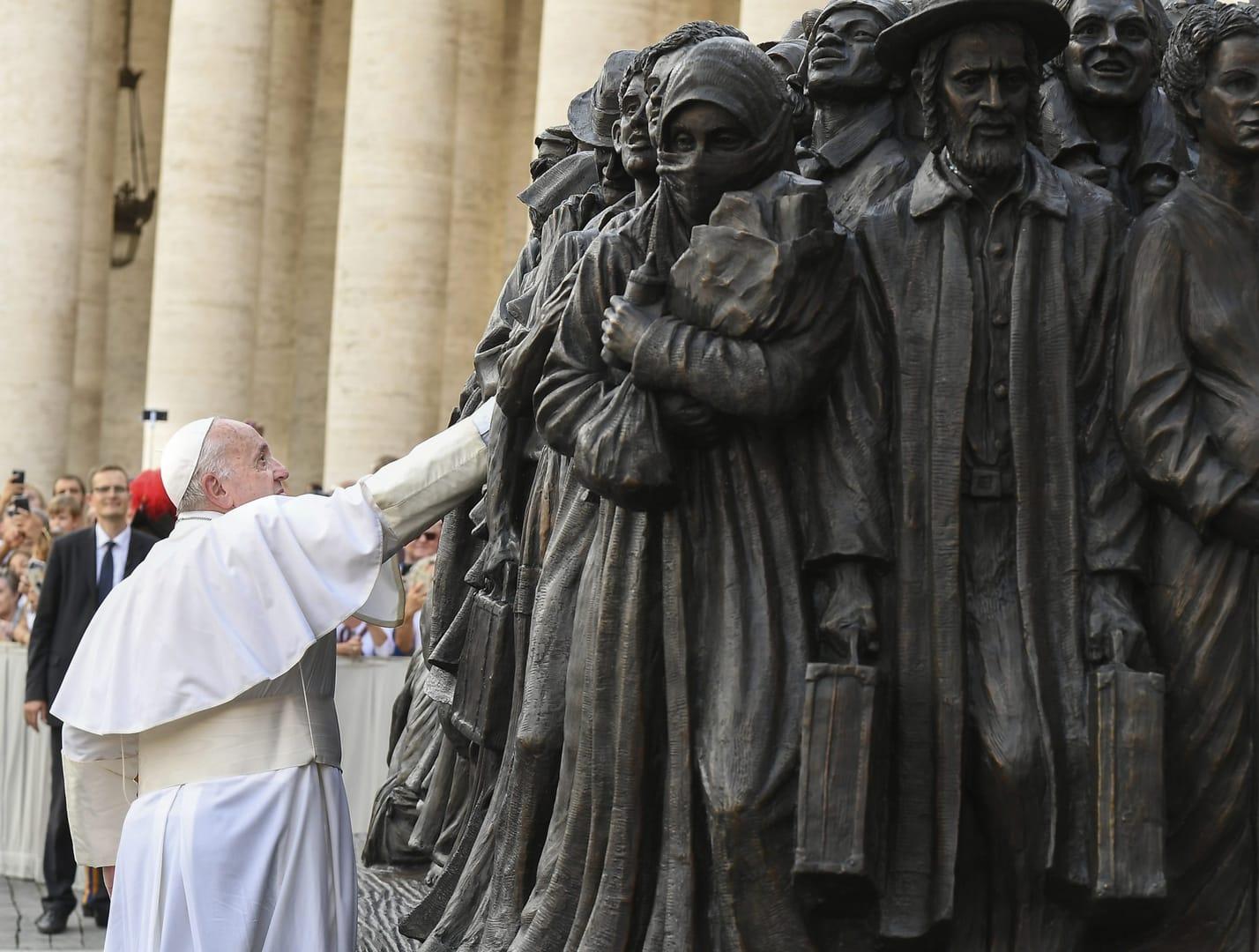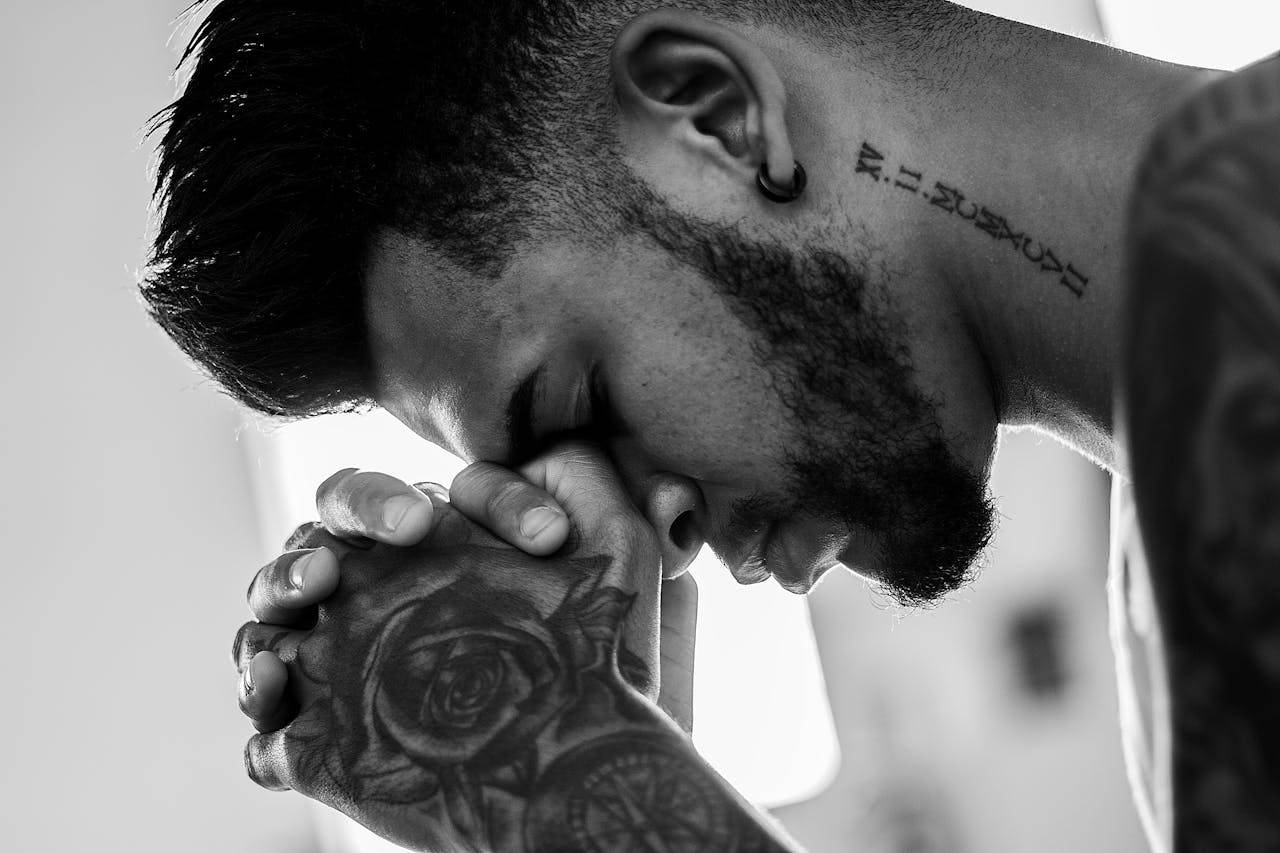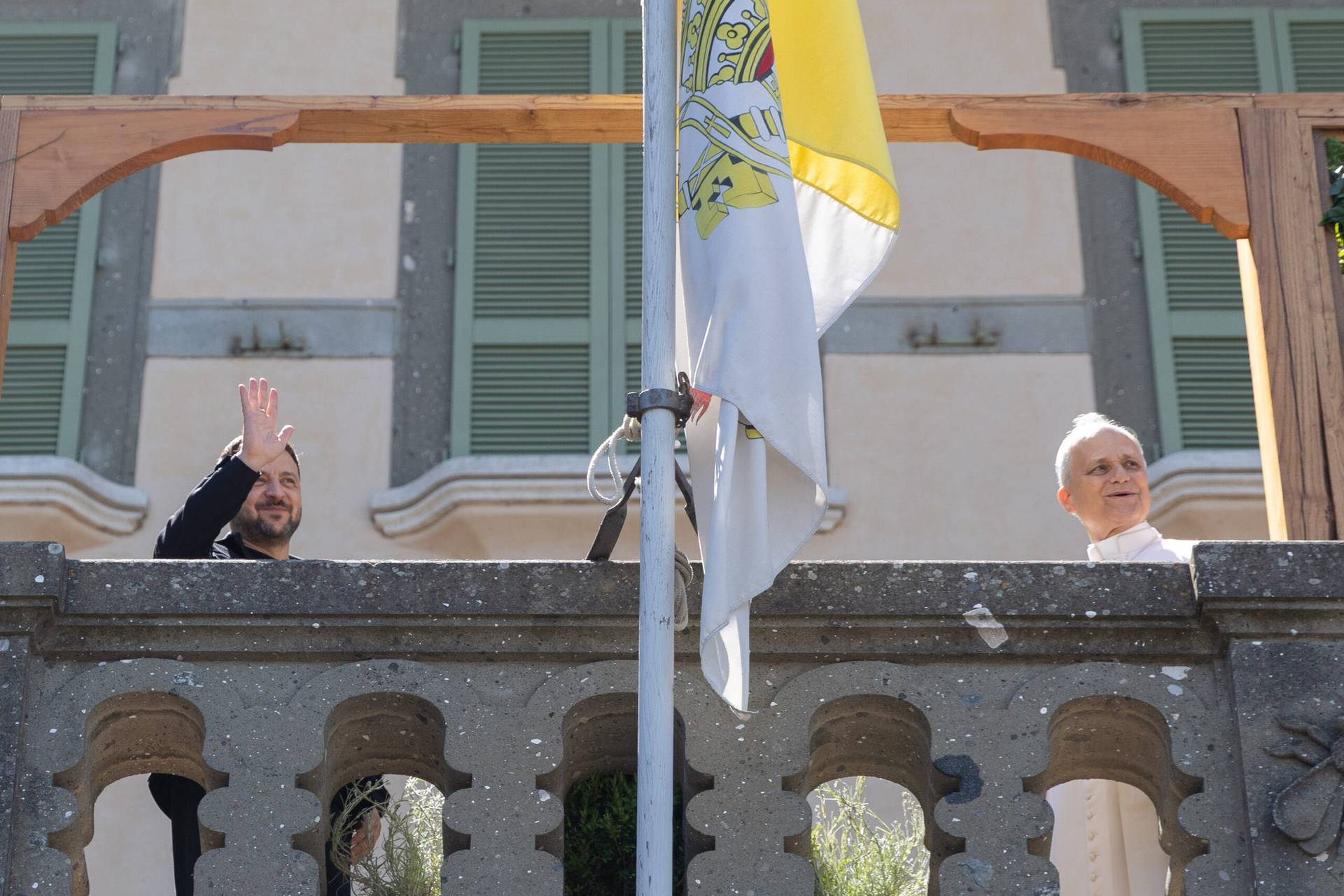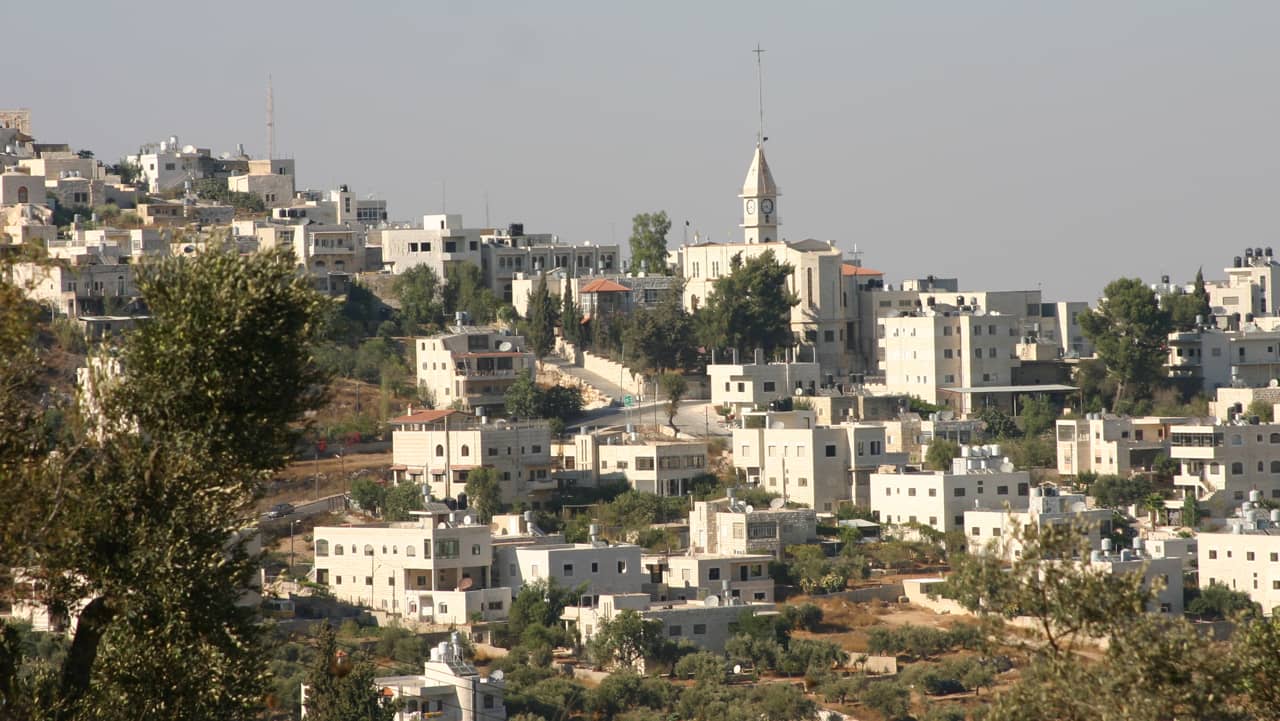ROME – After moving Pope Francis – and the world – with his sculpture “Homeless Jesus,” a Canadian artist is at it again, this time as the mastermind behind the first new sculpture installed in St. Peter’s Square in over 400 years: It depicts 140 migrants and refugees and is called “Angels Unaware.”
Artist Timothy Schmalz created the original concept for the sculpture at the request of the Vatican’s Migrants and Refugees office, headed by Cardinal-designate Michael Czerny, but overseen directly by the pope himself.
The new 20-foot tall bronze sculpture will be unveiled by Francis on Sunday, Feast of Archangels, during a special Mass in St. Peter’s Square for migrants and refugees. He will be accompanied by the artist and four migrants.
The sculpture shows 140 people from different cultures and from different times in history: From indigenous peoples to Jews escaping Nazi Germany to Syrians and Africans fleeing war and famine today.
Speaking with Crux, Schmalz said that the inspiration came from a passage in the Book of Hebrews: “Be not forgetful to entertain strangers: For thereby some have entertained angels unawares.”
It’s unclear how long the sculpture will remain in St. Peter’s Square, but Crux can confirm that it will be longer than “one week,” as some Italian news outlets have reported. In order to install the 3 1/2 ton sculpture at the crack of dawn on Monday, a section of cobblestones were removed from the square.
What follows are excerpts of Schmalz’s conversation with Crux.
Crux: How did the idea come to be?
Schmalz: Two ways: From scripture, it’s based on the Bible. All the time, when I work, I listen to the Bible. I have been doing this for years, it’s part of my inspiration. The idea came from Hebrews 13:2 – Be welcoming to strangers and many have entertained angels unaware.
I was requested by Migrants and Refugees to come up with a concept specifically for migrants. I went back to my studio and the two came together instantly: The Bible passage and the idea of migrants. It was an amazing blend of very topical concerns today and this historical or biblical scripture.
Why are there 140 people depicted in the sculpture?
I found out the number of sculptures in the colonnades of St. Peter’s were 140. And knowing that the first bronze cast of the piece would be placed in the square, I wanted to create that symmetry between the new and the old, and the idea of the saints and the precious sacredness of all human life. It was a great addition.
The figures in the sculpture – what I created was a sculpture that shows a tapestry of people from all historical periods of time. From ancient migrant people to indigenous migrant people to contemporary Syrians and Africans.
Being from North America, we have a saying that goes, “We’ve all come from someplace.” And I think that the sculpture shows that, a belief that Father Michael Czerny holds deep: The refugee crisis is not a crisis, it’s just what people do. It shows his idea, because whatever position you look at it from, you see every single culture and religion experiencing the same: Migration. It’s a visual lesson but also a visual interpretation of scripture.
Is it the same one you presented to the pope?
When I create a sculpture, I first make a small version, and then a larger one. When the migrants and refugees section asked for it, I dropped all my other sculptures because it was an incredible experience, the idea came down from the sky. From that first small version, I did a five-foot version of it, that’s going to be unveiled on Monday, in St. Paul’s Outside the Walls. And from that, I went to the 20-foot version, which is really an experience when you look at it, it’s like 100 sculptures in one.
I wanted to create a sculpture that wasn’t just a soundbite. I was fortunate to get a lot of actual, real people within the piece. I used a lot of photographs of immigrants that people gave to me, and even had some refugees from Africa who came and posed for the piece. This is the final version of it.
It took me a year of non-stop sculpting to make it. It’s very impressionist, but I didn’t want to be concerned with too many details, but with the emotion of the piece, having a reflection of all the different cultures but also all the different emotions that migrant people might be experiencing.
I have a Jew escaping from Nazi Germany right beside a Syrian refugee who’s right next to a Pole escaping Communism. I also have different emotions: The joys, the hopes, but also the tragic sorrow of leaving one’s home and one’s loved ones. It’s really a sculpture that I believe will hold people’s attention, and also tell a historical and cultural story.
Have you spoken with the pope at all?
One of the most delightful emails I ever received was after I created the model, saying that Pope Francis would be delighted if I could bring a little model to Rome so that he could bless it. I wasn’t even done with the small version. That’s really the beginning of the experience, but I’m very excited for tomorrow because it’ll be the first time Pope Francis sees the full size of the sculpture.
It’s interesting because I think of the significance of the piece and what it suggests. It’s the first time St. Peter’s Square has had a new sculpture in place in over 400 years. Or at least, that’s what a Vatican official said to me while we were installing it. She came over and said, “Do you realize that this is the first time a sculpture has been installed since Bernini?”
And that’s pretty awesome. Because what is being installed is not just bronze nor is it just art. It’s an idea. An idea of welcoming. If you think about the whole design of St. Peter’s Square, with two extended arms reaching out, historically, the whole concept was considered that they were welcoming arms to welcome not only the pilgrims, but also for the tourists. Because even in the 1600s Rome was a center for tourism.
And now, for the first time, you have people who’ve never before been represented in artwork in Rome: I strategically placed the figures that are very rarely, if ever, seen in artwork here, like the African, the Muslim, the Jew. I have several Sikhs. And you see how people from all over the world, Christian and non-Christian come into that square and what better thing to do with art than to express that invitation and that warmth. And to me, that’s what being Christian really is about. I think it suggests the Christian spirit throughout the centuries of welcoming.
And right at the center of the piece, you have the angels coming out. In the center of the idea of welcoming migrants, is that spirituality. But the message is very subtle. The person who approaches the piece can identify with these really human images, with these spiritual wings in the center. It’s to suggest that at the center of our lives, we must have this spiritual side.
Will you be there tomorrow?
I am. It’s going to be four refugees joining Pope Francis, who will unveil it. It’s going to be really exciting. Before the unveiling, the only thing that will be visible are the wings. The date on which it’s to be presented is actually providential: Literally, I could not have gotten it done any quicker than this. It got here two weeks ago, the installation went perfect. And Sunday is also the feast of St. Michael the Archangel. So you have in the center of the piece the angel.
Follow Inés San Martín on Twitter: @inesanma
Crux is dedicated to smart, wired and independent reporting on the Vatican and worldwide Catholic Church. That kind of reporting doesn’t come cheap, and we need your support. You can help Crux by giving a small amount monthly, or with a onetime gift. Please remember, Crux is a for-profit organization, so contributions are not tax-deductible.















